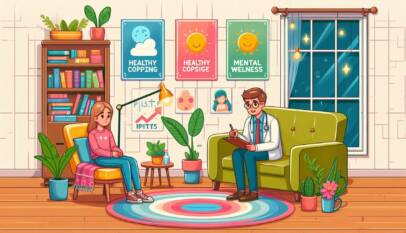
Trichotillomania, often referred to as hair pulling, is a complex condition that affects many individuals. Those who experience it often find themselves caught in a cycle of impulse and relief, leading to distress and embarrassment. Effective treatment options include cognitive-behavioral therapy (CBT), support groups, and habit reversal training, which can significantly help manage the urges to pull hair.
Understanding the emotional factors behind hair pulling is crucial for developing effective strategies. Many individuals may not realize that addressing underlying anxiety or stress can lessen the frequency of hair-pulling episodes. Hair Pulling Trichotillomania Treatment plans tailored to the individual can provide pathways to long-term management and recovery.
Awareness and education play essential roles in overcoming trichotillomania. Individuals suffering from this condition can find support and resources through various channels, empowering them to reclaim control over their hair and appearance. Access to the right treatments can lead to profound changes in their quality of life.
Understanding Trichotillomania
Trichotillomania is a complex condition characterized by the compulsive urge to pull out one’s hair. It affects many individuals and can have significant emotional and psychological effects. The key factors influencing this disorder include its definition, prevalence in various demographics, and underlying causes.
Defining Trichotillomania
Trichotillomania, also known as hair-pulling disorder, is classified as an obsessive-compulsive and related disorder. Individuals pull hair from various body areas, commonly the scalp, eyebrows, and eyelashes. This behavior often leads to noticeable hair loss and can result in physical injury and emotional distress.
People may engage in this behavior as a coping mechanism or a way to relieve stress. Symptoms often escalate, complicating treatment. Diagnosis typically involves self-reported behaviors and clinical evaluation by mental health professionals.
Prevalence and Demographics
Trichotillomania affects approximately 1-2% of the population, but estimates may vary based on the criteria used for diagnosis. It commonly emerges in childhood or adolescence, with a higher prevalence in females.
Research indicates that individuals with a family history of other mental health disorders may be more susceptible. The disorder can cross ethnic and cultural boundaries, affecting diverse groups while manifesting in different societal contexts.
Causes and Risk Factors
The exact causes of trichotillomania remain largely unknown. However, several contributing factors have been identified, including genetic predisposition, neurological influences, and environmental stressors.
Risk factors can include:
- Family History: Higher likelihood if relatives have a history of obsessive-compulsive disorders.
- Emotional Stress: Increased occurrences during times of stress or anxiety.
- Behavioral Conditioning: Associating hair pulling with relief or comfort.
Understanding these influences is crucial for developing effective treatment strategies.
Treatment Options
Various treatment options exist for managing trichotillomania. These include behavioral and psychological interventions, pharmacological treatments, and alternative therapies to support recovery.
Behavioral and Psychological Interventions
Cognitive Behavioral Therapy (CBT) is one of the most effective treatments for trichotillomania. It helps individuals identify triggers associated with hair-pulling and develop coping strategies. Habit Reversal Training, a component of CBT, trains patients to replace hair-pulling with a competing response.
Support groups can also provide valuable connections. Sharing experiences with peers fosters understanding and reduces feelings of isolation. Finding a therapist experienced in treating trichotillomania can enhance the success of these interventions.
Pharmacological Treatments
Medications may be prescribed to help manage symptoms of trichotillomania. Selective Serotonin Reuptake Inhibitors (SSRIs), such as fluoxetine, have shown some effectiveness.
Additionally, N-acetylcysteine (NAC), an amino acid supplement, has garnered attention for its potential to reduce hair-pulling behaviors. It’s important to consult a healthcare provider to determine the best medication and dosage for individual needs.
Alternative and Supportive Therapies
Alternative therapies can complement traditional treatments. Mindfulness and stress-reduction techniques, such as meditation and yoga, may help individuals manage anxiety and tension that trigger hair-pulling.
Supportive therapies, including art or music therapy, encourage creative self-expression while providing emotional relief. Maintaining a supportive environment, such as engaging family and friends, plays a crucial role in recovery, creating a network of encouragement and understanding.
Must-Have Features Of Lease Management Software To Make Your Life Easier
The world is moving forward at a very fast pace, and we are not waiting for anyone. In suc…




